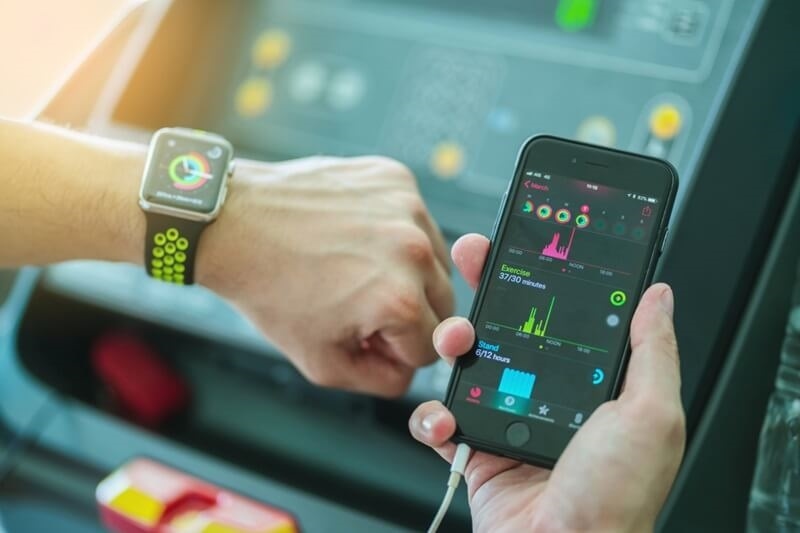
Let’s start with a confession: Martha, a spry 78-year-old from Arizona, used to roll her eyes at “techy gadgets.” That is, until her grandson gifted her a medical alert smartwatch last Christmas. Three months later, that same watch detected an irregular heartbeat during her morning tai chi session. A quick trip to the doctor revealed she needed a minor medication adjustment. “Turns out this thing isn’t just for texting emojis,” she laughs.
Martha’s story isn’t unique. Across parks, senior centers, and bingo halls, older adults are quietly revolutionizing their health routines with wearable health devices. These aren’t the clunky, beeping contraptions of sci-fi movies—today’s smart health trackers blend seamlessly into daily life while acting like a personal health detective, nurse, and cheerleader rolled into one.
Remember when watches just told time? Yeah, those days are gone. Modern health monitoring wearable devices do everything from tracking your afternoon stroll to flagging potential health hiccups before they become emergencies. But let’s get real for a sec—seniors aren’t exactly the target market for gadgets marketed with neon lights and dubstep soundtracks.
Here’s the thing: Companies finally caught on. Today’s fitness wearables for seniors prioritize clear screens, comfy bands, and features that actually matter for aging bodies. Take Joan, 71, who swears by her device’s gentle “nudge” to hydrate during her weekly bridge marathon. Or Frank, 82, whose heart rate monitoring device tipped him off to overexertion while gardening in July’s heat.
“But I’m not a marathon runner!” you might say. Good news: These tools aren’t about hitting personal bests. They’re about understanding your body’s rhythms—and catching curveballs early.

Let’s bust a myth: Fitness wearables for seniors aren’t just counting steps. Sure, they’ll track your walk to the mailbox, but their real magic lies in the details.
Take the heart rate monitoring devices built into most wristbands. While you’re sipping tea or rearranging photo albums, they’re quietly noting whether your pulse is steady, spiking, or doing the cha-cha. For those managing conditions like atrial fibrillation or hypertension, this 24/7 data can be life-changing.
Then there’s the sleep tracking—a feature Ruth, 69, calls her “midnight therapist.” After noticing her device reported constant restlessness, she swapped her scratchy pajamas for breathable cotton and voilà: “I finally stopped feeling like a zombie at morning water aerobics.”
Pro Tip: Look for wearables with fall detection. Many medical alert smartwatches now sense spills (whether it’s you or your iced tea) and can automatically call for help if you can’t reach a phone.
We’ve all been there. You unbox a new gadget, and suddenly it’s like trying to read hieroglyphics while balancing on one foot. But today’s smart health trackers are designed with silver-haired users in mind:
Still nervous? Try dipping your toe in with basic models. The Clip&Go tracker ($25 at most drugstores) simply clips to your collar and monitors activity levels. No apps, no fuss—just a gentle reminder to keep moving.
Don’t panic—we’re not replacing physicians with wristwear. But consider this: A 2023 Johns Hopkins study found seniors using health monitoring wearable devices had 34% fewer ER visits. Why? These gadgets excel at spotting patterns.
Maybe your heart rate monitoring device notices palpitations that only happen after your new blood pressure medication. Or your sleep tracker reveals you toss more on nights you skip magnesium supplements. It’s like having a lab technician who works for free and never judges your 3 a.m. cookie habit.
Real-World Win: After Bob’s medical alert smartwatch detected abnormally low oxygen levels during sleep, his doctor diagnosed mild sleep apnea. Now, with a CPAP machine, he’s “snoring less and finally dreaming about something besides paperwork.”
Ready to dive in? Let’s avoid tech overwhelm with three golden rules:
Top Picks for 2025:
Read More: The Ultimate Guide to Online Learning for Older Adults
Here’s a secret: Tech companies want your business. Many now offer senior-specific support, including:
Still sweating? Enlist a pharmacy tech-savvy neighbor as your “tech buddy.” Trade them homemade pie for monthly check-ins. Everybody wins.
Let’s keep it 100: These gadgets aren’t magic. They can’t replace flu shots or kale (unfortunately). And for some—like those with pacemakers or severe tremors—certain devices might be iffy. Always chat with your doc before strapping on new tech.
Red Flags to Watch For:
Imagine this: Socks that detect swelling before a diabetic ulcer forms. Rings that track arthritis flare-ups via finger stiffness. Earrings monitoring blood pressure through your earlobe. Sounds wild? Prototypes already exist.
The bottom line? Wearable health devices are evolving faster than a grandkid’s TikTok feed. And with 80% of hospitalizations for seniors being preventable, these tools could be the key to staying independent longer.
Still on the fence? Try this: Borrow a friend’s smart health tracker for a weekend. Wear it while gardening, napping, or dominating at Scrabble. Notice how it feels. Check the data. Did you walk more than you thought? Spot any weird heart spikes during your thriller movie marathon?
The goal isn’t perfection—it’s awareness. As Clara, 89, puts it: “My watch doesn’t judge when I skip Zumba. It just whispers, ‘Hey, maybe walk around the block?’ And sometimes, I listen.”
So here’s your challenge: Pick one device from this guide. Wear it for a month. Then ask yourself: Do I feel more in tune with my body? More confident living alone? If the answer’s yes? Well, Martha might just welcome you to the gadget-lover’s club.
Read More: Enhance Your Knowledge at Any Age With The Guide For Seniors
Wearable health devices aren’t about chasing youth—they’re about embracing aging with curiosity and smart support. Whether it’s a medical alert smartwatch giving peace of mind or a heart rate monitoring device spotting trouble early, these tools put you in the driver’s seat. And who knows? That unassuming wristband might just become your favorite accessory since stretchy waistbands were invented.
This content was created by AI